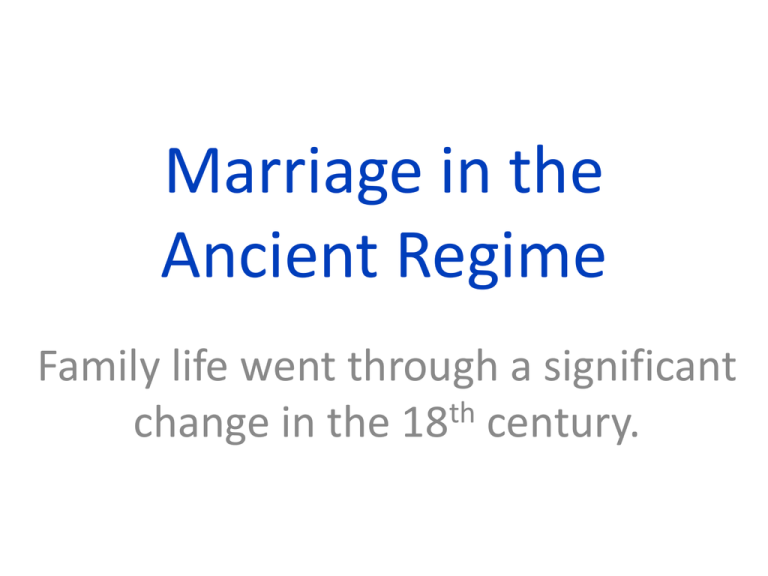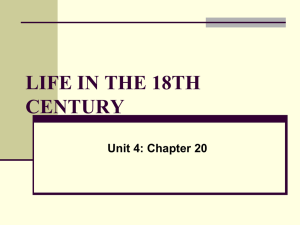
Marriage in the
Ancient Regime
Family life went through a significant
change in the 18th century.
• Parish records indicate that the extended family was
already a rare phenomenon in western Europe by
1700.
– Young married couples usually established their own
households instead of moving in with one of their parents.
• Almost certainly for this reason, people did not
marry young in the 17th & 18th centuries, except for
the aristocrats.
– In some cases, the averaged age was 25 years of age, in
others 27 or 28 at time of first marriage, and some never
married at all.
– Men and women had usually worked for about ten years
and were fully formed adults by time of marriage.
• In some areas, another delay to marriage was that
permission from local lords or government officials
was needed to marry.
• Illegitimacy was relatively low until 1750, perhaps
one in 20 or fewer, although about 1/5 to 1/3 of all
children were conceived before marriage.
– It reflects strong community controls that could pressure
young couples to marry.
• Community intervention in private life continued
after marriage, with public rituals that humiliated or
degraded people whose behavior, adultery or
abusive treatment of a spouse.
• These patterns began to change in the mid 18th century.
– Illegitimacy rates soared from about 1750 to 1850, reaching
more than 25%, even up to 1/3 of all births.
– More young people were engaging in premarital sex, and fewer
men were marrying women they had impregnated.
• Growth of the cottage industry meant income was no
longer tied to land, so younger people become
independent and married earlier, and more often for love.
• As populations grew, more and more young people
moved to cities in search of economic opportunities or
jobs, and such mobility further encouraged sexual
freedom.
• Young girls, poorly paid as domestic or textile works, still
hoped for marriage, and often were enticed into sexual
relationships with the promise of marriage.
• This pattern is quite similar to contemporary American
practice; both reflect the inability of community controls
to force marriage and enforce sexual conduct.
• Many commentators, then and now, see high rate of
illegitimacy as signs of social decline.





